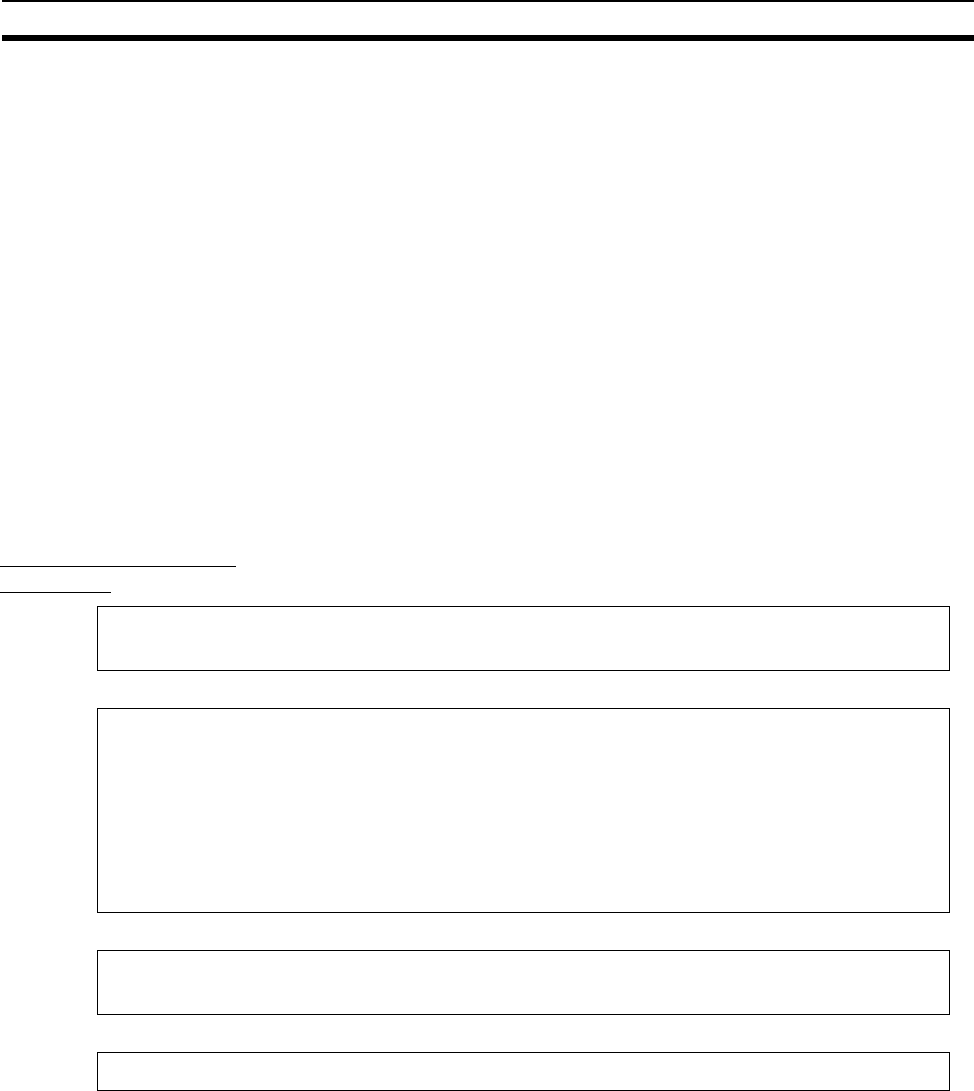
165
FINS/UDP Method Section 7-3
The UDP port number for the host application (e.g., personal computer) func-
tions differently from the ports that can be used depending on the setting for
the address conversion method at the Ethernet Unit. Basically, the same num-
ber can be used for the UDP port number set in the Ethernet Unit (default:
9600), but the number does not need to be the same as the Ethernet Unit
under the following application conditions.
• Sending commands from the host application when the automatic gener-
ation (dynamic) method is used as the Ethernet Unit’s address conversion
method.
• Sending commands from the host application without registering the IP
addresses in the IP table when the IP address table method is used as
the Ethernet Unit’s address conversion method.
• Sending commands from the host application without registering the IP
addresses in the IP table when the combined method is used as the
Ethernet Unit’s address conversion method.
For each address conversion method, when commands are sent from the
Ethernet Unit, use the same value set in the Ethernet Unit for the UDP port
number of the host application.
Procedure for Using
FINS/UDP
Note Routing tables are required in the following situations:
• When communicating with a PLC or computer on another network (e.g.,
remote programming or monitoring using FINS messages or a CX-Pro-
grammer).
• When multiple Communications Units are mounted to a single PLC (i.e.,
CPU Unit).
• When routing tables are used for one or more other nodes on the same
network.
1. Make the basic settings.
Refer to SECTION 2 Startup Procedure in the Operation Manual Construction of Networks.
↓
2. Make the settings in the Unit Setup.
With the CX-Programmer connected online, select the Ethernet Unit in the CX-Programmer's I/O
Table Window. Right-click, and select Unit Setup. Then make the following settings in the Unit
Setup Window.
Setup Tab
• Broadcast
• FINS/UDP port (Default: 9600)
• IP address table (for the IP address table method or combined method)
↓
3. Make the routing table settings and transfer them to each PLC. (See note.)
Set the routing tables with CX-Net, and transfer them to each PLC.
↓
4. Create a ladder program that includes the SEND(090), RECV(098), and CMND(490) instructions.


















